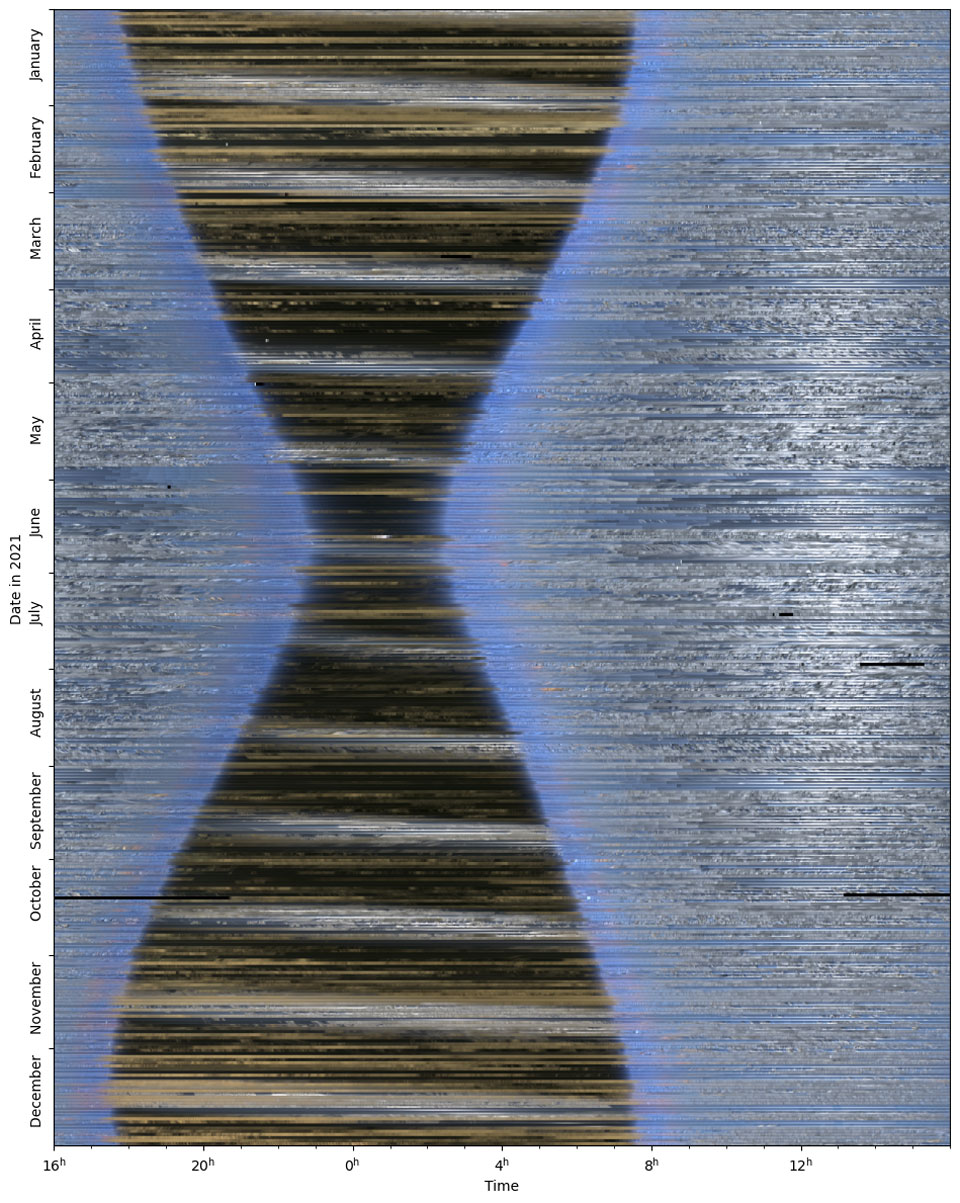안녕하세요. 오늘은 NASA에서 어떤 우주의 모습을 비춰줄까요?
먼저 사진부터 감상하시죠!

이 사진의 제목은 The Sky in 2021 입니다. NASA에서 공식적으로 제공한 설명을 보시죠.
What if you could see the entire sky -- all at once -- for an entire year? That, very nearly, is what is pictured here. Every 15 minutes during 2021, an all-sky camera took an image of the sky over the Netherlands. Central columns from these images were then aligned and combined to create the featured keogram, with January at the top, December at the bottom, and the middle of the night running vertically just left of center. What do we see? Most obviously, the daytime sky is mostly blue, while the nighttime sky is mostly black. The twelve light bands crossing the night sky are caused by the glow of the Moon. The thinnest part of the black hourglass shape occurs during the summer solstice when days are the longest, while the thickest part occurs at the winter solstice. Yesterday was an equinox -- when night and day were equal -- and the northern-spring equinox from one year ago can actually be located in the keogram -- about three-quarters of the way up. Follow APOD on Instagram in: English, Indonesian, Persian, Portuguese or Taiwanese
오늘도 광활한 우주 앞에 인간이 얼마나 작은 존재인지 깨닫게 되네요.
저는 내일도 더 좋은 사진과 함께 돌아오겠습니다, 행복한 지구여행 되세요!
'Astronomy Picture of the Day' 카테고리의 다른 글
| NASA 오늘의 사진 (2022-03-23) (0) | 2022.03.23 |
|---|---|
| NASA 오늘의 사진 (2022-03-22) (0) | 2022.03.22 |
| NASA 오늘의 사진 (2022-03-20) (0) | 2022.03.20 |
| NASA 오늘의 사진 (2022-03-19) (0) | 2022.03.19 |
| NASA 오늘의 사진 (2022-03-18) (0) | 2022.03.18 |